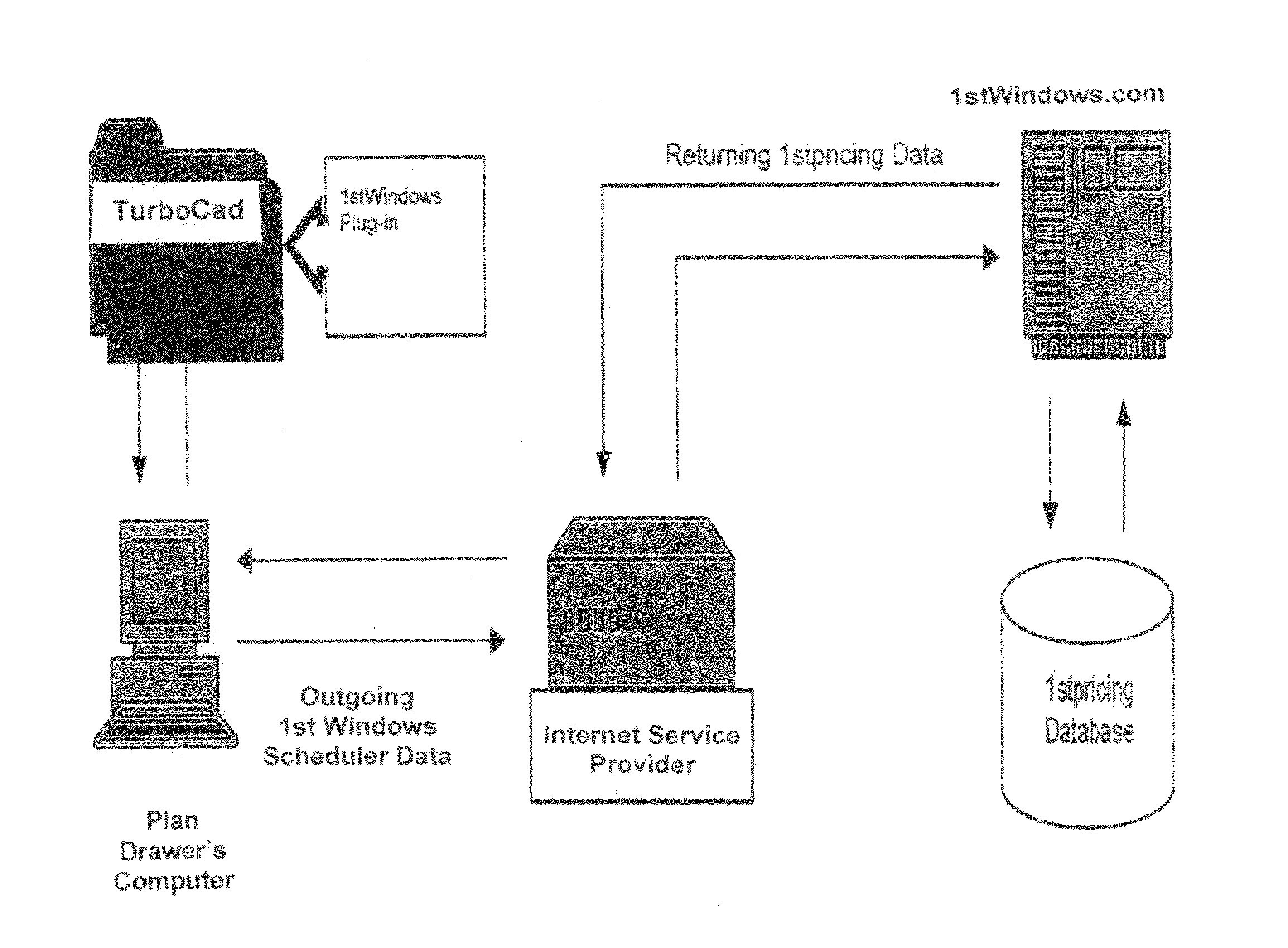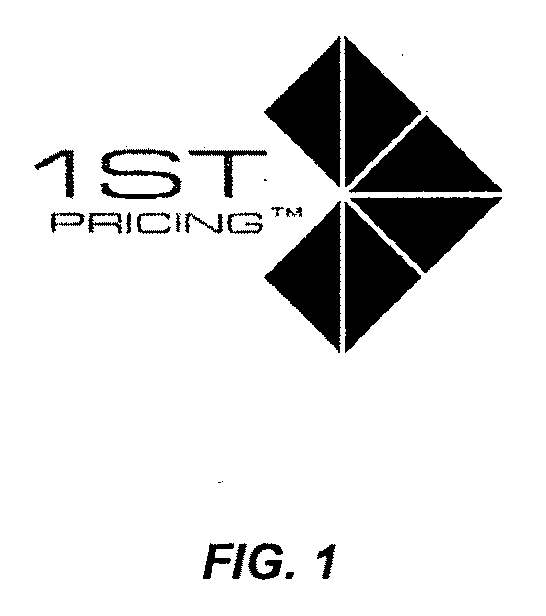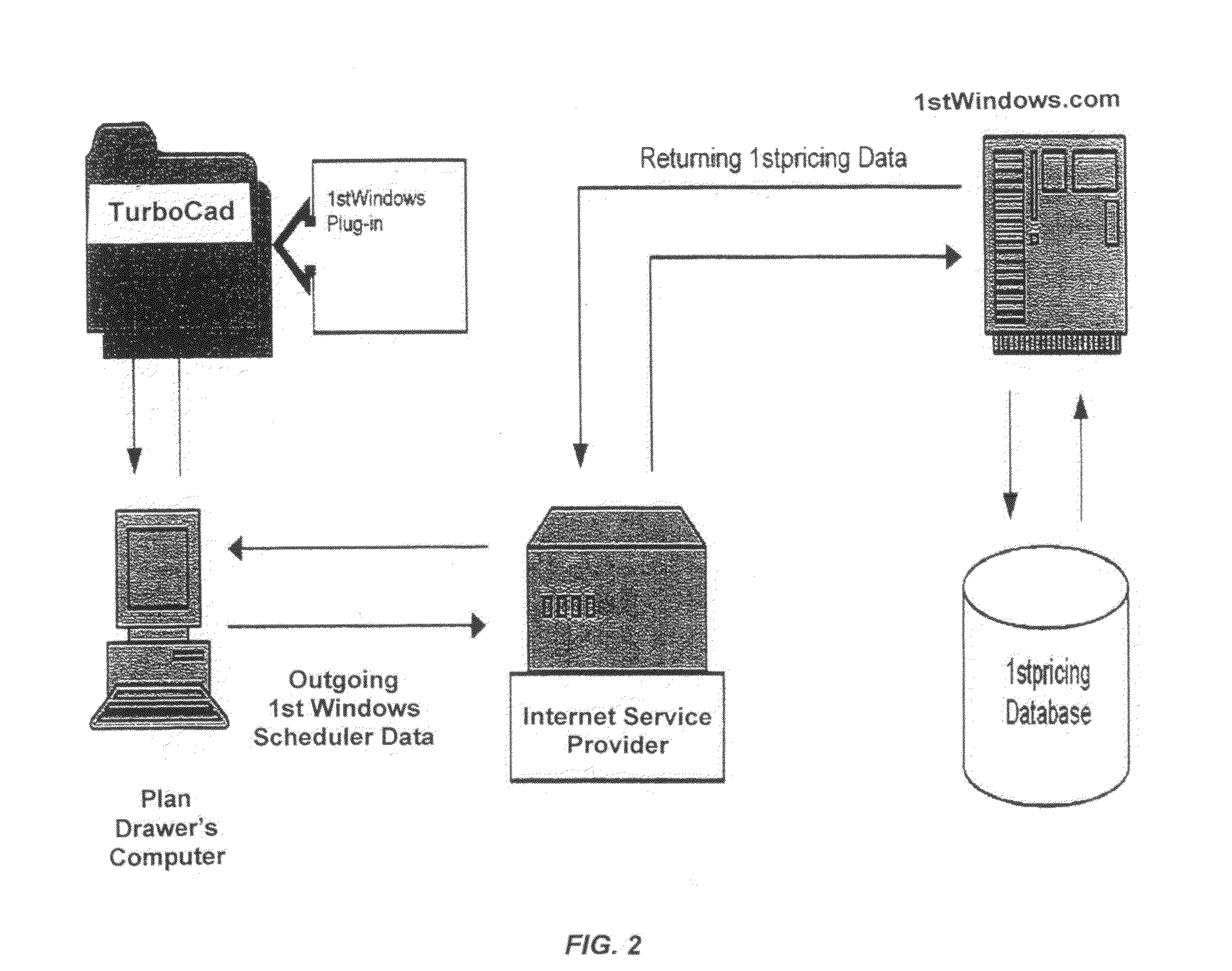Automated pricing system
a pricing system and pricing method technology, applied in the field of automatic pricing system, can solve the problems of large construction cost overrun, significant construction time delay, and the method and system described by wakelam et al. can only be used for the construction of an entire new building, etc., to achieve rapid, efficient and cost-effective generating
- Summary
- Abstract
- Description
- Claims
- Application Information
AI Technical Summary
Benefits of technology
Problems solved by technology
Method used
Image
Examples
Embodiment Construction
[0178]The present invention may be understood more readily by reference to the following detailed description of the preferred embodiments.
DEFINITIONS
[0179]For purposes of clarity, various terms and phrases used throughout this specification and the appended claims are defined in the manner set forth below. If a term or phrase used in this specification, or in the appended claims, is not defined below, or otherwise in this specification, the term or phrase should be given its ordinary meaning.
[0180]The term “about” as is used herein means approximately, as is known, and may be determined, by those having ordinary skill in the art.
[0181]The term “ActiveX” as is used herein means a framework for defining reusable software components in a programming language independent way. Software applications can then be composed from one or more of these components in order to provide their functionality in a manner known by those having ordinary skill in the art.
[0182]The phrase “adaptor” as is ...
PUM
 Login to View More
Login to View More Abstract
Description
Claims
Application Information
 Login to View More
Login to View More - R&D
- Intellectual Property
- Life Sciences
- Materials
- Tech Scout
- Unparalleled Data Quality
- Higher Quality Content
- 60% Fewer Hallucinations
Browse by: Latest US Patents, China's latest patents, Technical Efficacy Thesaurus, Application Domain, Technology Topic, Popular Technical Reports.
© 2025 PatSnap. All rights reserved.Legal|Privacy policy|Modern Slavery Act Transparency Statement|Sitemap|About US| Contact US: help@patsnap.com



